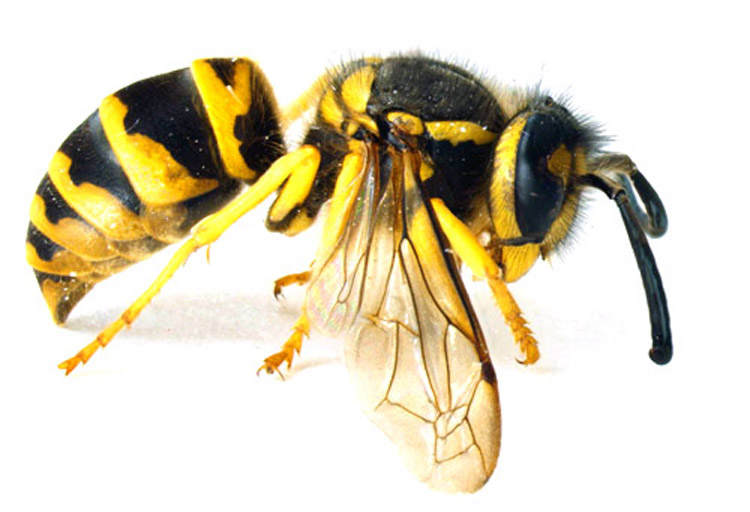
Yellow jackets are not bees, but are small yellow and black wasps up to an inch long. They nest in the ground, in walls, under decks and in timber-retaining walls, with some super nests reaching the size of a car. The workers eat pollen or nectar and are attracted to sweet foods like cans of soda or rotting fruit. They feed the young in the nest high-protein foods such as insects and spiders, thus they are beneficial.
Keeping food sources cleaned up, including the removal of fruit that falls off of trees like crab apples and pears, will help reduce their interactions with people. There are thousands of species of wasps in the world and most are the size of a fruit fly. Most of the big ones are beneficial because they pollinate flowers and eat caterpillars and spiders.
However, when they start taking over the patio, it is hard to live with them. To prevent a huge buildup of wasps, the best time to start controls is in the spring. Wasp populations start with a single female each spring, but it is in the fall when they are most noticed. In hive-making wasps, a fertilized female survives the winter hidden in the ground or a crack in a tree or building wall. In the spring, she makes a nest and lays eggs that hatch into the workers of the wasp hive.
The size of the nest and the number of workers increases all summer long. There can be hundreds or thousands of workers in a single nest by fall. It takes several weeks to go from an egg laid in a cell through the grub-like larva stage that pupates and finally hatches into an adult. Only the adult is susceptible to insecticide sprays that are sprayed at a nest. New adults hatch every day and new eggs are laid if the queen is not killed.
If possible, leave the nest alone. But if necessary, it can be removed. After dark, set up a flashlight aimed at the nest opening. Don’t remain near the light. Wasps can and will sting at night. Wear long clothes with rubber bands on the entry points. Wasps tend to aim for the face of their victims so wear a head covering, too. Spray the nest hole or holes with a wasp spray. If the nest is in the ground, dig up the whole nest while the adults are dead to completely destroy the nest and all the other life cycle stages. Stuff cotton balls that have been soaked with the spray into the entry hole of nests that can’t be dug up or destroyed. Repeat sprays and more cotton balls will be necessary for several weeks on those nests.
 Related Articles & Free Subscription
Related Articles & Free Subscription
Keep Houseplants Healthy and Pets Safe
Prevent Tick-Borne Diseases While Enjoying the Outdoors



Comment here